Gary E. McKee Remembers….
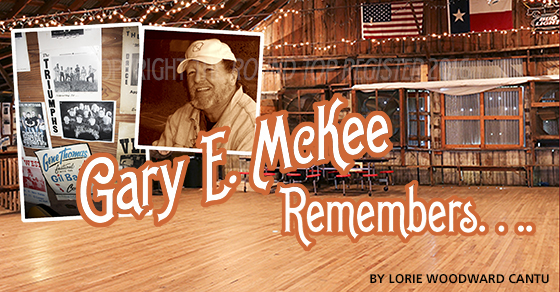
2024 Spring Antiques Show | March 14 – 31
2024 Fall Antiques Show | October 10 – 27
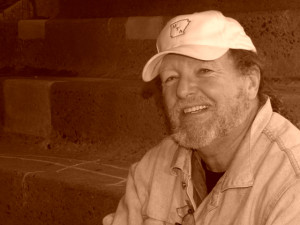
Gary E. McKee attributes his love of road trips to the long treks his parents made between California and Texas on U.S. Highway 90 in the throes of a corporate relocation in 1953. His mother was pregnant with him, so McKee made the drive three times.
With the exception of a stint in the Navy and a short-lived attempt at being a city-dweller in Dallas, McKee has always claimed Fayette County as home. He grew up in Schulenburg where his dad worked for Carnation Milk. As a grown up, he lives in Fayetteville. When he’s not enjoying the view from his porch, he feeds his twin passions of Texas roots music and local history, by serving as the editor of Texas Polka News and Polkabeat.com and as vice-chairman of the Fayette County Historical Commission.
As our early morning conversation proved, it’s impossible to separate music from history, especially in Texas, so we just cruised Memory Lane before it was paved. The windows were rolled down, and KTSA was on the radio.
I’m retelling his stories about his life in the 1960s the way I heard them—or at least the way I think I heard them . . ..
Music in the Air
“As far as music goes, a lot of locals, including my classmates, had family polka bands. There was music everywhere.
Back then, music was also a big thing in grade school. It’s something they really should bring back. We had music every day. One time we learned an old Czech folk song named, ‘Stodola Pumpa,’ which means ‘pumping water.’ Not too long ago, a bunch of us were together and somehow that song came up. Every single one of us remembered the words.
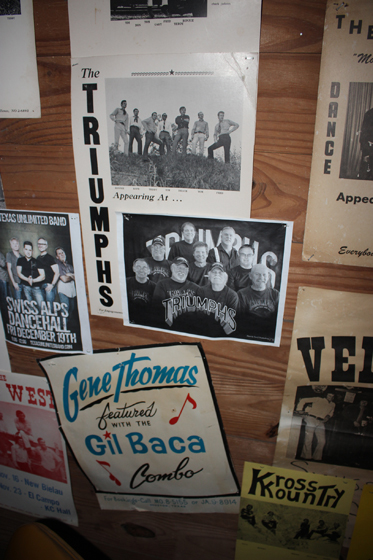
We also danced at school but just the basics such as the ‘Hokey Pokey’ and the ‘Virginia Reel.’ The ‘legal age’ for real dancing was about 16, but we got our start at the Schulenburg Community Center. It was the place for birthday parties in junior high.
While we were aware of other music—the polka bands were big in Houston and at local events such as church picnics—it was all about rock-and-roll for me and my friends. There were several rock-and-roll garage bands. I was a roadie for a few and followed groups such as ‘Sweet Blood’ and ‘Honest John,’ all-electric cover bands. The Pettit Brothers were a revelation. They were bluegrassy, folksy and acoustic. They blew everybody away because they were the first live acoustic music we Schulenburg kids ever heard.
I am well-rounded musically because Schulenburg was perfectly situated between Houston, Austin and San Antonio, and you could pick up radio stations from all three cities. It was a big deal because in Weimar, for instance, you could only get Houston stations. One time I was listening to three different stations from three different cities and ‘Hey Jude’ was playing on all of them.”
The Cultural Hub
“The cultural hub for teenagers in Schulenburg was the Dairy Mart and its large, dark gravel parking lot in back.
We’d go to get fueled up on burgers and fries—and to make plans. If it were Saturday night, we’d figure out which dances we were going to go to. On a good weekend, there would be one at Swiss Alp, one at New Bielau and maybe one at the Weimar KC. Some people never left the parking lot because they had a curfew and had to be home by 10 or they didn’t have any money to get in anywhere else.
[pullquote width=”300″ float=”left”]”While there were dances all over, Swiss Alp was the mecca.”[/pullquote]
Periodically, the Liquor Control Board would target Fayette County. They weren’t inconspicuous.They were the guys in black suits and ties at the Schulenburg Festival in August when everybody else was wearing shorts and t-shirts or boots and blue jeans.
Sometimes the LCB would go so far as to block Highway 77 above the Swiss Alp Dance Hall. They’d stop cars searching for ice chests. Their roadblocks were never very successful because the first car full of kids who got stopped would hightail it for the Dairy Mart to tell everyone else. Then we’d just all take the back roads to Swiss Alp.”
The Mecca
“While there were dances all over, Swiss Alp was the mecca. On a Saturday night, there were cars parked for a mile along the side of Highway 77 holding the overflow from the parking lot. There were easily 800 – 1,000 people at every dance. The dances at New Bielau were about the same size.
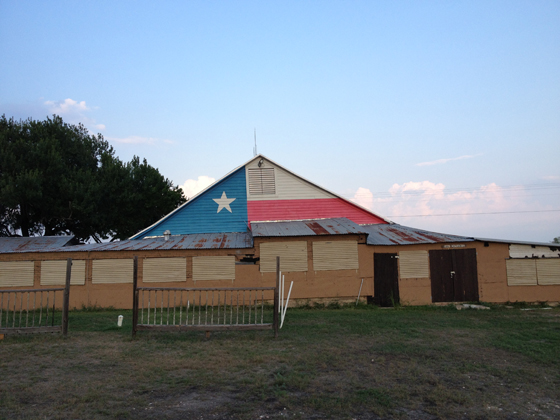
I started going to Swiss Alp before I was old enough to enjoy dancing with girls, and I was too busy to pay any attention to the music. In those days, beer and soda water came in glass bottles. My friend and I would go collect the bottles and turn them in to Mr. Gabler, Boots Wagner or whoever was running the bar that night for the deposit. It was how we earned spending money.
To be successful, you had to cultivate the friendship of the older kids and adults, so they’d hang on to their bottles for you. It increased your efficiency if you could pick up several bottles at a time instead of having to hustle for singles.
Bottle collecting was a two-man operation because it was a competitive business. There were two brothers from Ammannsville who collected bottles, too, and if we didn’t guard ours, they’d steal them. They were serious. They chunked rocks at me, on more than one occasion, trying to get me to leave our pile unguarded. Rocks and glass bottles aren’t a money-making combination.
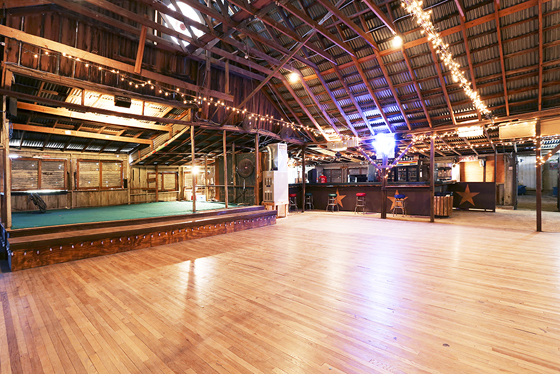
You couldn’t have bottles without bottle caps. The bartenders opened the bottles. Periodically they had to clean out the bin below the opener, so they emptied them on the ground. Over time, bottle caps piled up and walkways formed. One time I dug down into one [pile] and it was about eight inches deep. It was like being on an archeological dig because I found bottle caps from different brands that represented all the different eras of Swiss Alp.
Those walkways were great because they cleaned your shoes automatically. When it rained, the water didn’t puddle on them, and they kept you from walking in the mud. Plus, they made a distinctive crunching sound when you walked on them.
Swiss Alp, the hall, was a principality of sorts. It was divided into smaller fiefdoms. There was a Schulenburg corner, a Flatonia corner, a Weimar corner and then there were people from La Grange and beyond in the other corner. If you wanted to talk to a girl from another town, you had to already know somebody from there and have ‘permission.’ It took friends and courage to get a dance much less a date.
The parking lot was just as much of the scene as the hall. We tailgated. Well, actually we hung out in the parking lot drinking beer and trying to figure out whether or not it was worth spending our money to go in, especially if there was a dance somewhere else in the county. We rarely had money to pay admission at more than one place.
The parking lot had one vapor light. If you’d kicked the pole it would go out, so our activities were cloaked in the dark. We’d kick them off and the owner, Mr. Tietjen, or the deputy on duty would walk over and kick them back on. Whoever came would talk to us for a while. When he left, we’d kick the light off again, and he’d come back. It would go on like a tennis match until he gave us the look. Then we had sense enough to stop.
If you caused trouble, Sheriff Jim would come to the hall and get you. If you had long hair, he’d haul you down to the jail and give you a burr. (Long hair was a relative concept in Fayette County in the 60s. I once got in trouble in ag class because my hair touched my ears.) You could always tell who screwed up on the weekend because they had a buzz cut at the next dance. Frankly, I don’t remember there being a lot of trouble.”
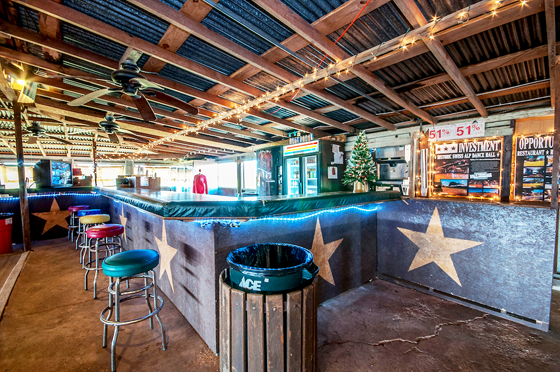
Living a Legacy
“For more than 50 years, Mrs. Marian Tietjen, along with her husband Egan, ran Swiss Alp Dance Hall. I always considered her one of my only blood relatives in Fayette County. She and my dad shared a rare blood type, and when she had to have surgery in the 60s my dad donated blood.
Before I was old enough to drive, my mother would drop me off at a buddy’s house about four miles from Swiss Alp. In the days before no trespassing signs, he and I, armed with our Zebcos, would make our way from [stock] tank to tank across pastures, fences and the Navidad River where I once caught an eel. We eventually arrived at Tietjen’s store where ‘Miss’ Tietjen would be cooking sausage; she’d make us a sausage wrap, and we’d buy an RC Cola.
Running a dance hall wasn’t all fun. It was hard work. The Tietjens were also in the dairy business. Miss Tietjen would go from running the dance on Saturday night to milking cows starting about 4 a.m. on Sunday.
Every February, the Original Triumphs play Swiss Alp. I go and see the same people dancing as I did when I was a teenager, only now they have gray hair or no hair at all. Despite the passage of time, the memories remain. Not too long ago, I danced over a certain spot and was struck by the memory of my first dance with a certain lady in that exact location many years prior.
As one of the hall’s owners once told me, ‘Everybody who has ever been here has a significant memory of a certain spot on this floor. There’s no way to separate the music and the memories.’”
[line]
by Lorie Woodward Cantu
2024 Spring Antiques Show | March 14 – 31
2024 Fall Antiques Show | October 10 – 27